It wasn’t so long ago that RF power meters weren’t included in transceivers (or transmitters). You got plate current, grid current, high voltage (maybe), and S units for the received signal. That was enough, and if the other station heard you, well, there you go! These days a radio meter has lots of functions—it’s just a simple matter of programming what to display.
Looking around the typical Ham station, what equipment is like that RF power meter—something that sooner or later you really need to have but isn’t part of the usual basic equipment list? What should be considered standard accessories we can all use? After you collect the usual tools, which others will you find really useful? After you read this article, maybe it would be a good idea to leave a certain catalog open to a certain page before a certain birthday or holiday?
Gadgets and Features
Let’s start with those little accessories everyone accumulates. You see them in the catalogs and on every hamfest table. These provide a great “bang for the buck,” and you’ll find plenty of uses for them.
Antenna Switches
It’s hard to imagine something more universal in the Ham station than simple two-position A/B switches that can handle full legal power up to the 70cm band. There are a number of them out there, but the MFJ 1702B (below) and similar models are my favorites. They’re rugged, solidly built, and you can take the back off with a screwdriver to check them out at a flea market. When you are trying out a new piece of gear or reconfiguring some equipment, having a few of these around makes it easy to reconfigure your station. Some have a center-ground position and some automatically ground the unused inputs. There are quite a variety to suit any budget and need.
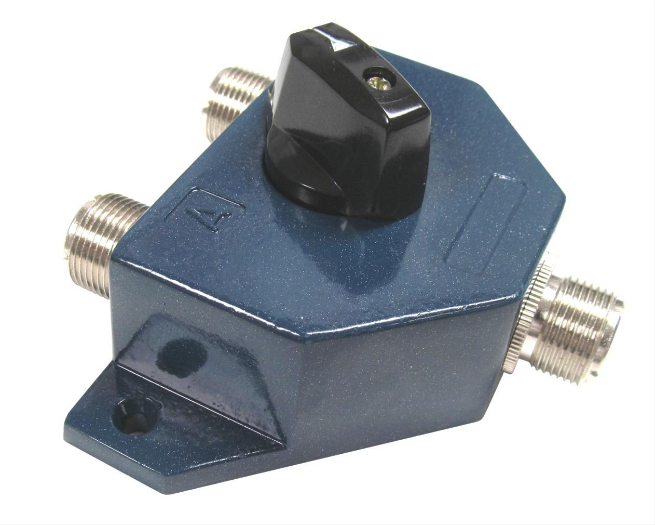
Another useful type of switch is the four- or six-position switch. It can handle a few transmit antennas plus a dummy load. Some A/B switches and a multi-position switch can make a manual equivalent for the more expensive (but more convenient) relay-based switching systems. You can find switches with transient or surge protection like the Alpha-Delta model below.
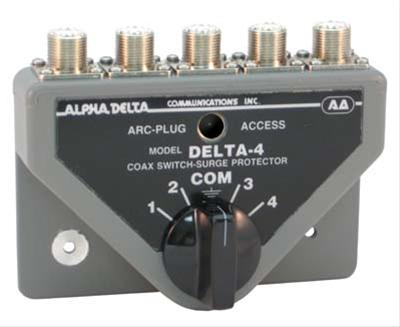
Data Interfaces
While a lot of new radios have a built-in data interface, many excellent radios more than a few years old rely on their microphone and audio output connectors for digital modes. Similarly, a lot of us are using spare PCs and laptops that don’t have a high-quality sound card. Good performance on these new modes requires great audio—hum, buzz, noise, and distortion all conspire against you!
Most of us started with a passive data interface with some small transformers for isolation and either a PTT circuit or connection. We rapidly found out that connecting and disconnecting the data interface to use the microphone was a pain! I can save you the trouble of learning that for yourself—get a good data interface with a microphone switch. Not only does it make changing modes a lot more convenient, but it saves wear and tear on cables along with keeping unwanted noises out of your audio.
West Mountain Radio, Tigertronics, and RigExpert offer a variety of models. The most basic interfaces are simple passive circuits that connect to a PC sound card. Most also offer cables customized for your brand and model of transceiver’s microphone input. The popular SignaLink™ from Tigertronics (below) acts as a standalone sound card, converting between audio and USB. West Mountain Radio’s Rigblaster Blue uses Bluetooth wireless connectivity for audio and rig control. With a Bluetooth-equipped tablet or phone, you can build a very portable, very wireless station!
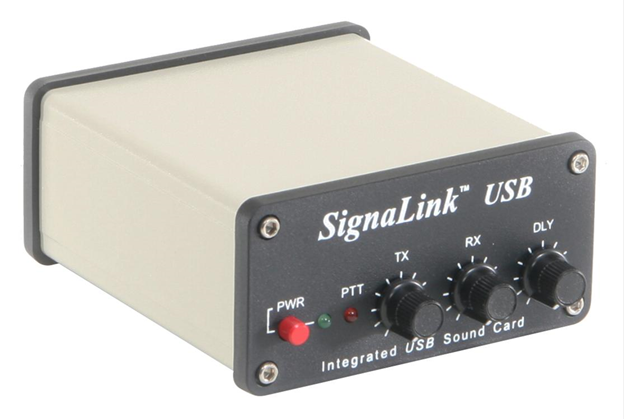
Digital Audio and Control Port
It’s the third decade of the 21st century. Every radio, even the handheld transceivers, should have some kind of fast data interface, don’t you think? USB, Bluetooth, and WiFi are so standard even kitchen appliances have at least one of those interfaces. If you’re thinking about buying new gear, make sure it has a digital data port that supports an audio codec and control functions. I hope we’ll start to see more manufacturers offer high-speed I/Q data streams for truly high-performance digital mode support.
If you are integrating older gear into your station, you can use Serial-to-USB converters that create virtual COM ports. Most converters use the Prolific or FTDI brand converter chips—the FTDI chips seem to be the most compatible with Ham radio software. There are Bluetooth-to-Serial converters, too. In general, think ahead when buying new gear.
Power Splitters
When you first bought a power supply, those binding posts looked like they could connect just about anything. Soon they will be too full to add another cable—trust me on this! What you need is a power splitter, and there are many different types.
If you’ve standardized on Powerpole connectors (I have), there are miniature splitters like the West Mountain Radio PowerNode below that turn one connection into three (the input plus three outputs). They are great to have in your Go-Kit, in your glove compartment, in your tool box—anywhere you might need to connect “just one more thing.”
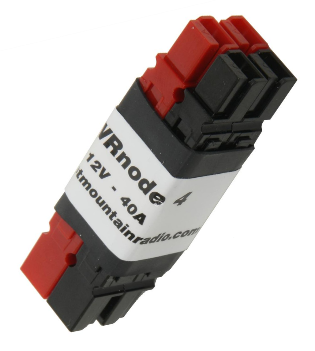
In a permanent station, a more capable distribution panel is needed. Many offer fused connections for extra protection. Using a panel allows you to use one solid, heavy connection to the power supply and then the appropriate size cable with its own connection for your growing collection of gear. Some even have built-in voltmeters like the Paradan model below.
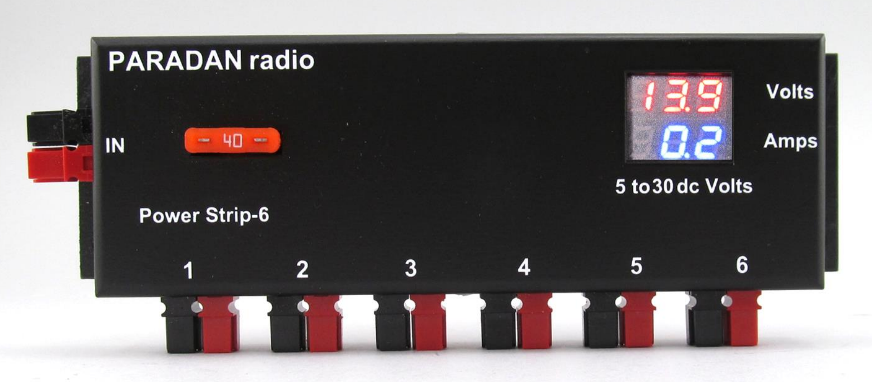
Boom Sets
One day, after a long session of operating as a net control or in a busy contest, when your thumb aches from pushing that mic button and your ears are worn to a frazzle from cranking your rig’s tiny speaker to its maximum output, you’ll ask, “Isn’t there a better way?” The answer is, of course, a resounding yes, and it’s called a “boom set.” Any type of radio, from a tiny handheld to a battle-class HF dreadnought, will benefit from the use of quality headphones and the convenience of a microphone that follows you instead of vice versa.
Long a favorite of pilots and public service operators, the boom set is a set of headphones with a microphone mounted on a flexible boom. Boom sets are available in lightweight models like the Heil Sound BM-17 (in yellow) and the full ear-cup INRAD W1 (in black).
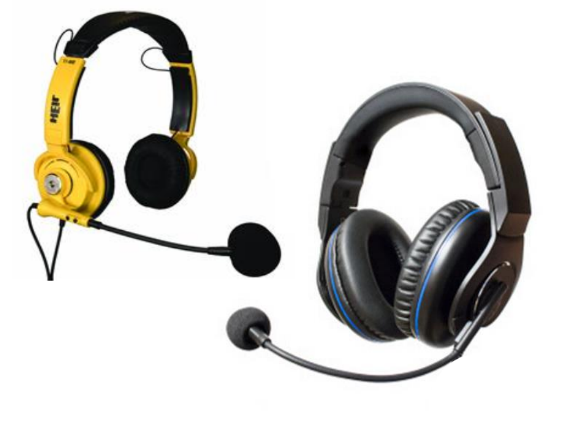
Most manufacturers offer adapters to connect your boom set to the various types of radio microphone and headphone jacks. It’s a good idea to “try before you buy” to find the most comfortable style and fit. Once you’ve used a boom set for extended operating, you will never go back to handheld mics and listening to speakers. (Your family will thank you for that, too!). Don’t forget to get a footswitch for fully hands-free PTT operation, too!
Tools and Stuff
How about some useful additions to your workbench and toolbox? While these aren’t as snazzy as a new whiz-bang goodie on the equipment desk, you’ll be grateful to have these at hand.
- Start with a really good mini diagonal wire cutter with pointed ends (often called an “end nipper”) that can cleanly trim the tiny wires in coax braid and shields. You’ll find plenty of other uses for it as well.
- Splurge on a good name-brand digital voltmeter that is built to last for years.
- One of my go-to tools is a 1/16th inch flat-blade screwdriver for various small jobs, applying glue, packing stuff into cracks or prying it out—amazingly handy!
- A scratch awl for poking holes in stuff can even be used in place of a drill to start screws in wood and plastic.
- Brass bristle brushes can be used for cleaning connectors without scratching or leaving steel debris that will rust. Your old toothbrushes are handy for various cleaning jobs.
- A good wire stripper that handles 24 AWG to 12 AWG will see steady use. Get a sharp one and take care of its blades.
- Invest in the right crimping tools for Powerpoles, Molex, and crimp terminals. You’ll never have a connector pull off the wire again!
- Finally, take the plunge and change your tray-style tool carrier to one with pallets that hold all your tools where you can see them. Not only will you have the right tool right where you expect it to be every time, but an organized layout makes it harder to lose or forget tools. Inexpensive tackle boxes are great for storing your connectors and adapters, too.
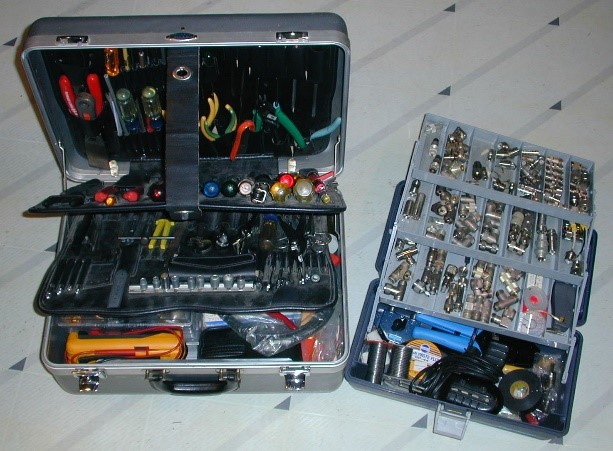
Coax Jumpers and Crimping Tools
I don’t know anybody who has enough jumpers. Get a bunch or, even better, learn how to make them. Buy a set of good stripping and crimping tools and learn how to use them. You’ll save money and be able to make just the right cable any time. You can get a spool of coax and a bag of connectors, turn on the ball game, and turn the coax into jingling jumpers.
RG-8X is good enough for just about any temporary use through 2 meters, and a few foam-dielectric RG-8-size jumpers will handle your amplifier output signal. Why foam? It is much more flexible than solid dielectric, which makes the jumpers easier to use in cramped quarters. To prevent the center conductor in foam dielectric coax from pushing through the foam and shorting to the shield, don’t coil or bend the cable tighter than it’s minimum bend radius.
Cable Hanger
Another inevitable piece of equipment, more like a bit of furniture really, will deal with all those cables you accumulate. You can buy special hangers for test probes at a premium price, but what works especially well are inexpensive bathroom towel hangers. You can buy them in many styles and attach them to walls, closet doors, shelves, you name it. Hanging up your cables keeps them untangled, available, and visible. They not only hold coax, data cables and test probes, but microphones, ropes and ties, and even small bags of stuff.
I think you’ll agree that these “extras” really should be part of your station or shop. Each one will make your station and Hamming a little better and more successful, and that’s what counts!

